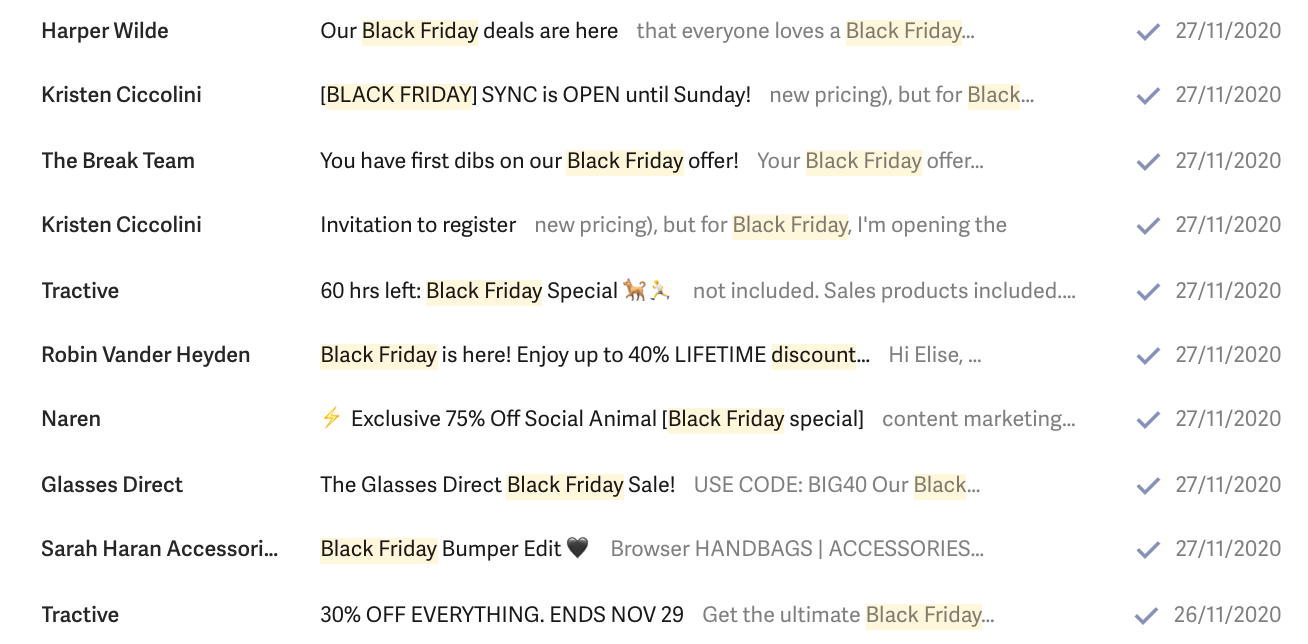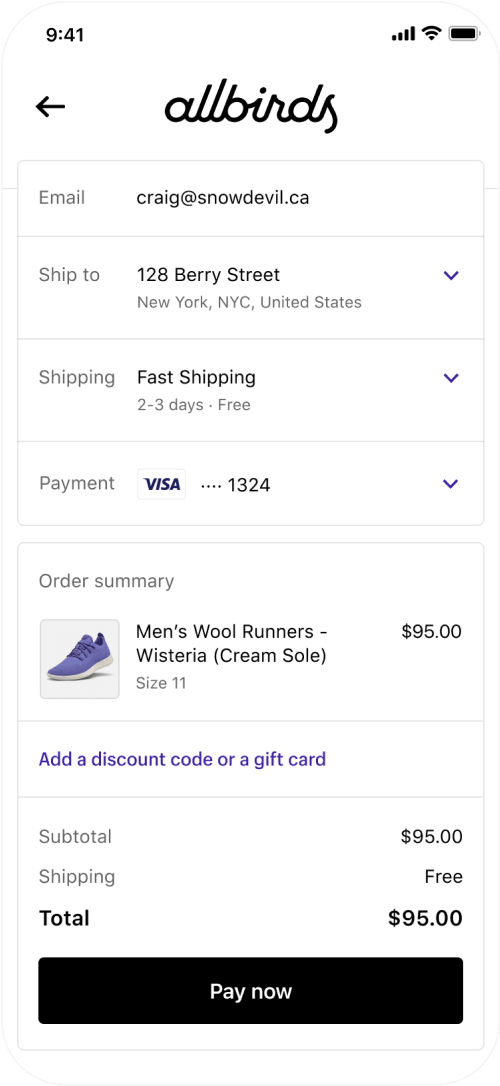Last year, consumers spent a record$9 billiononline on Black Friday—a 22% increase from 2019. Online sales hit an all-time high on Cyber Monday, with consumers spending$10.8 billionin one day—the biggest day for US ecommerce ever.
There’s even better news for retailers gearing up for 2021’s BFCM. Experts predict that consumers will spend a record-breaking$17 billionthis Black Friday and Cyber Monday—an 18% increase on last year.
To help merchants chart a path for this year’s BFCM, Shopify Plus held a webinar, How to Turn Peak Traffic into Peak Sales this Black Friday. It brought together ecommerce experts and merchants to share the trends they’re seeing, their strategies for this holiday shopping season, and how they plan to prepare for BFCM.
- Launch special editions
- Over-forecast inventory
- Focus on retention over acquisition
- The discounting debate
- Implement AR/VR
- Make a testimonial sandwich video
- Remove friction
Launch special editions
The Black Friday Cyber Monday weekend is havoc. Though the main event lasts just four days, many consumers continue their festive shoppingbefore and afterthe BFCM weekend. Retailers are capitalizing on peak shopping season by meeting excitable shoppers with new product launches.
TakeBOOM! By Cindy Joseph, for example. The brand considers the promotional calendar to be six weeks long (Thanksgiving till December 31). To coincide with that peak season, it’s launching a new product during this time for the first time ever.
The retailer plans to launch its new product at a discounted price for BFCM to build up anticipation. The goal? To entice people who buy once to buy again (more on that later).
"It’s the first time that we are launching a product and attaching that Black Friday Cyber Monday discount to it,” BOOM!’s co-founder and CEO, Ezra Firestone, says.
It gives us another opportunity to build up an anticipation list. Just like for our sale events for our product launches, we build up an anticipation list, and then release the product. They invariably sell out.”
DTC brandHill House Homeis taking a similar approach. It launched a new apparel line just in time for BFCM, as VP of Marketing Tayler Carraway explains: “Our product mix is different, and we’re using this as an opportunity to re-engage our returning customers and talk to them about all these wonderful amazing new things for them.”
Over-forecast inventory
It’s no secret that the supply chain industry is struggling. Theshortage of shipping containersis making it harder for retailers to move goods from manufacturer to warehouse to customer. AEuropean shortage of HGV driversadds insult to injury.
Bokksu, a CPG brand that sells subscription boxes of Japanese snacks, ran into supply chain issues last BFCM. Its founder, Danny Taing, says, “There has not been a year where I have not seen shipping delays from fulfilment to packing to shipping, especially in the last two years.
“It has become even more intense for any merchants that didn’t experience it last year, and shipping was out of control.”
Not only that—Bokksu’s surge of BFCM orders put pressure on inventory. “We had already over-forecasted what we expected to do, doubling our plan of acquisition just for October to December. We ended up tripling and getting tens of thousands of new customers in just a month or two, which was fantastic,” Danny says.
"We were really excited when we had low customer acquisition costs, but then the thing that broke was not even our kind of inventory. It was our fulfilment centre in Japan. They just did not have the manpower to be able to pack and ship for all this new growth."
This BFCM, Danny recommends brands “ship earlier and set your deadlines to receive things by Christmas much earlier. All of that needs to be done, because this year also looks like it's going to be a little bit of a wild west.”
Another recommendation is to prepare every single part of the supply chain and logistics process. Make sure it’s ready for whatever growth you have, especially for gifting-type products.
This year, Bokksu is working with two to three different third-party logistics (3PL) partners to help with the surge in orders. “We are getting a ton of over-forecasted supplies and staff,” Danny says.
Focus on retention over acquisition
It’s easy to assume that the BFCM period is the time to acquire new customers. Ezra Firestone argues that “for 60% of brands, Black Friday Cyber Monday tends to be a time to monetize audiences that you built throughout the year.
It doesn't generally tend to be a time for customer acquisition, given that the ad markets are very competitive at that time. If you’re not a gifting brand that someone’s going to buy as a gift for themselves or others, it can be difficult to run acquisition.”
Because of this, BOOM! dials down acquisition goals and focuses heavily on remarketing and loyalty. Ezra adds, “We're working on BFCM the whole year, because we’re acquiring and engaging audiences that we can then monetize in Q4.”
So, what do those retention marketing strategies look like? Ezra explains, “We run an early bird campaign where we get people to sign up for a whole month ahead of time. ‘Hey, the sale is coming. Sign up for it.’—we run that to cold audiences.”
Once someone purchases from the early bird list, BOOM! sets up a discount ladder. Existing customers get 5% more than the discount you got the first time. The catch? They’ve only got three days to use it. “We're using time constraint and a discount ladder, and a behaviorally dynamic automation coupled together to create that repeat order rate and works pretty well,” Ezra says.
BOOM! is able to convert 12% of people who buy one time during Black Friday to buy a second time. However, Ezra is aiming for more: “Our goal is to get 25% of people who buy once during the sale to buy a second time.”

Hill House Home takes a similar approach. Alongside its new apparel line, it hosts the Nap Room—a virtual event that builds community and has founders live on video.
Its VP of Ecommerce, Tayler Carraway, says, “It’s a live Q&A. We have music, we have a chat room, we have all these really fun and engaging things that help strengthen that bond with our customers. This is engaging. Customers will ask us questions about the new products we’re launching, and so we’re just taking that up a notch for BFCM.”
以斯拉补充道:“你早些时候开始构建非盟了OB欧宝娱乐APPdiences, generally, the more effective, even if they haven’t bought yet. If they’re just warm audiences who have seen your video content, who have maybe gotten some of your emails, who are in your orbit, the more effective your Black Friday Cyber Monday tends to be.”
The discounting debate
Take one look at your inbox throughout the BFCM weekend and you’ll be overwhelmed with discounts. The availability of coupons has a huge impact on customer expectations. Not only do they expect a BFCM discount, but they expect bigger savings. A 10% coupon code doesn’t cut it anymore.

Take it from Ezra. Last year, BOOM! built up its “biggest ever sale,” getting everyone’s attention and promising the world. But it only gave a 10% saving to customers during BFCM—the same as the biggest discount the brand had given throughout the rest of the year.
“There was so much hate—on our emails and from our customers—that we only gave 10%. We had to email everybody and increase the whole thing,” Ezra says. “We’d built up this anticipation for the biggest sale of all time and then we did not deliver in the eyes of our customers on that.
Now, we do 10% all year when we run a promotion, every six or eight weeks. We’ll run a single item promo, or a new product launch, or a multi-item promo. Then on Black Friday Cyber Monday, we give that 15%.”
Can’t offer dollar-off deals good enough to impress your customers? Perhaps you don’t want to impact brand value like Bokksu’s Danny Taing: “I don’t want people to get used to that as a brand and to the premium image we’re trying to project.
“We’ve realised that discounting is not the right solution for us for BFCM. It causes misaligned expectations. People just wait for that one time a year for discounting.”
The deals aren’t gone entirely though. Instead of money-off coupons, Bokksu is “discounting in a much bigger way: we give upgrades or add ons, like your box to be shipped in this beautiful handcrafted wooden container that is reusable instead of a normal paper box.”
Danny adds: “It's very special and different, but you can still make a big announcement and have it go viral on social media during BFCM.”
Implement AR/VR
Platforms like Snapchat and Instagram have made augmented and virtual reality available to the masses. By 2025, it’s estimated that 4.3 billion people will use social media apps containing sometype of AR technology.
We’re still a way off from augmented reality turning the ecommerce world on its head. However, that’s not to say retailers aren’t using AR technology to support customers throughout the BFCM holiday season.
One brand doing this on its ecommerce site isGunner Kennels. Its dog crates come in various sizes, making it difficult for customers to know which size best suits their dog and car. Through its new AR technology, shoppers can place a virtual kennel beside their dog to check it first. It helps to address concerns that ease a customer’s purchasing decisions.
The results speak for themselves. After implementing AR technology,order conversion rate increased by 40%. Gunner’s VP of Marketing, Macey Benton, says: “As we see higher adoption rates with the [3D] models, we are also seeing lower return and exchange rates.”
Make a testimonial sandwich video
广告通过BFCM是昂贵的。更多的品牌ands are bidding against each other to snap up a space in an already-crowded news feed. If you are going that route, it’s critical that your advertising investment pays off.
“At the end of the day, you have to be able to get people’s attention and convince them that they should go look at your products,” says Ezra Firestone. “The best asset to do that is a long-form video.”
Ezra created the “love, demo, love” video format—also known as the testimonial sandwich—to do this. It starts with the face-to-camera testimonial of a customer sharing the ownership benefit of the product. This is followed with a demonstration of the product in use and its intended environment, and then more love.
“Use it in your advertisements on social media to warm that audience up and get them in an open-to-buy mindset before they hit your offer page,” Ezra says.
The testimonial sandwich format works because it uses user-generated content to buildsocial proof. Some92% of peoplewill trust a recommendation from a peer. It’s easier for a shopper to see themselves in the shoes of a peer—someone who’s solved the pain points, goals, or challenges they’re facing using your product.
The best part? “Gone are the days where the expectations of consumers are super-high-polished photography or videography,” Shopify’s Sheena Brady says. “iPhones are good enough to create these types of videos. That’s an excellent, accessible way to improve conversion on a budget.”
Remove friction
You’ll have a tough time convincing BFCM shoppers to buy your products if your website makes it hard for them to do so. Pre-purchase friction can take many forms, from slow site speeds to a complex and overwhelming checkout.
Let’s take a look at four obstacles that customers face when they’re debating whether to make a new purchase, and how to solve them.
Site speed
Did you know that 64% of smartphone usersexpect a site to loadwithin four seconds? Fail to meet those expectations and you’ll leave customers feeling dissatisfied—79% of whom will be less likely to buy again.

However, there’s a fine balance between speed and functionality. Certain elements that improve user experience can worsen site speed.
Shopify site speed score takes into account multiple pages. It weighs product and collection pages as more important than the homepage because it’s where the majority of site traffic will land.
Google’sPageSpeed Insightsare more granular. However, results can be misleading—it doesn’t necessarily take into account the functionality needed for online stores.
If you’re using this test, pay attention to the Largest Contentful Paint Lab data, as it measures perceived load speed. The total page size should generally be less than 5 MB.
If it takes more than three seconds to load a page, consider making website speed a priority. Just a one-second speed improvement canboost conversions by up to 27%.
Site speeds in the 2.5- to three second range have diminishing returns. Beat the <2.5 seconds benchmark? Focus on other areas of your site to improve conversion.
International shoppers
Theworldwide ecommerce marketis tipped to approach $5 trillion this year. Expanding your reach and reaching customers outside of your country is one way to increase your sales. Yet cross-border commerce comes with its own challenges.
Some 35% of all Shopify traffic comes from international visitors. If their local currency isn’t offered as a payment method, 30% of them won’t consider making a purchase.
Adapt your website to the customer’s native preferences to improve conversion. Divert overseas shoppers toward alocalizedmicrosite with their local language and currency, like Gymshark’s popup directing British customers to the United Kingdom microsite. It’s a tactic that increases GMV by 13%, on average.

Checkout
Have you convinced a customer to add an item to their online cart? You’ve fought half the battle—but it’s not over yet. More than a quarter of shoppersabandon their cartbecause the checkout process was too long.
Optimize your checkout to take payment before they change their mind using tactics like:
- One-click checkout.ShopPayhas the fastest conversion on the web. The app securely saves customer shipping and payment information so they can check out in a single click. Retailers using ShopPay see 56% higher conversion on desktop and 91% higher on mobile.
- Monthly payment installments.Shopify’s buy now, pay later solution lets customers break up their payments over time. Customers are even looking for this payment option on lower-priced items and orders.
- Discount countdowns.Show them on the checkout page to prevent shoppers from exiting the page without purchasing. They have to order within the next 15 minutes to get the cost savings.
Some of the brands I’ve worked for have four or five messages happening on different products. We want to take that pressure off the customer and make it extremely clear if you are offering a discount and what you are discounting. Keep it extremely simple, concise, and clear.”
—Tayler Carraway, VP of Ecommerce at Hill House Home

Shipping
Research shows that17% of carts are abandonedbecause shipping costs were too high. The Amazon effect of free delivery means three-quarters of customers nowexpect deliveries even on orders under $50 to be free. So, where possible, offer free shipping on all BFCM orders.
不能吸收额外的运输成本?用这个作为an opportunity to increase AOV throughout the holiday season. Set a threshold to qualify for free shipping, like orders over $50. Display that minimum threshold across your site using a sticky bar.
Regardless of whether a customer redeems the free shipping offer, remove other shipping-related friction—and give last-minute shoppers the confidence to buy—in the checkout. Allow your customers to get their products in the way they want, with options like buy online, pickup in-store (BOPIS) or local delivery.
它会杀死一石二鸟:客户通用电气ts their item faster than if it were to be shipped via courier. You also save logistical costs—and are less prone to shipping delays wreaking havoc with customer satisfaction—by having the customer collect their item from your store.
Get your BFCM in full swing
Black Friday Cyber Monday is more than a weekend. Everyone goes into shopping mode throughout the final two months of the year—and retailers capitalize on it. Change up your marketing strategies to beat competitors and convert customers when they land on your website.
Next year, prepare early. Do a postmortem on your previous holiday campaigns in January, while they’re still fresh in your mind. What went well? What could you do better? Revisit your answers in June to get your 2022 BFCM plans underway.
Most of all, remember that resource burn is real. Take it easy on yourself and give yourself some grace. You can only do your best.






